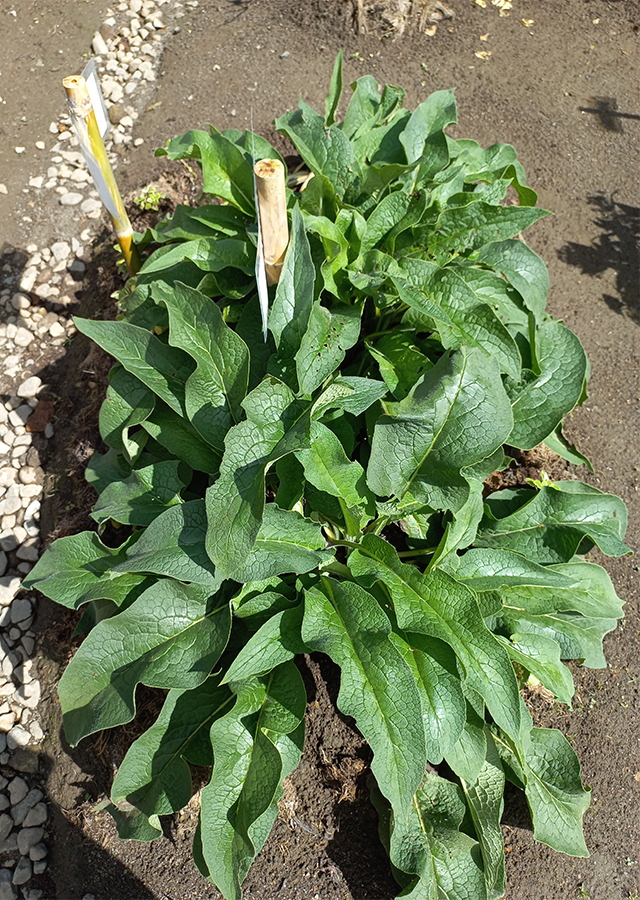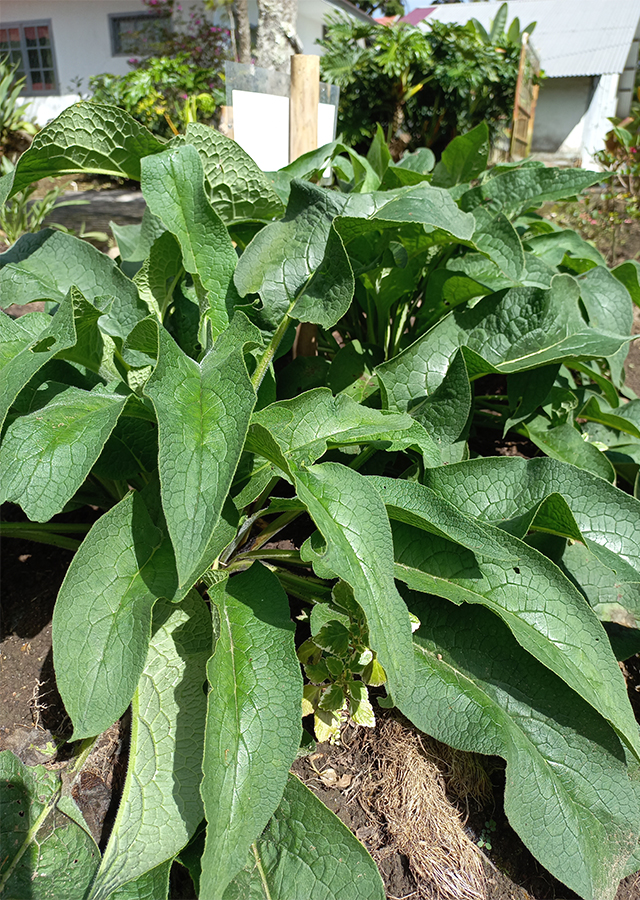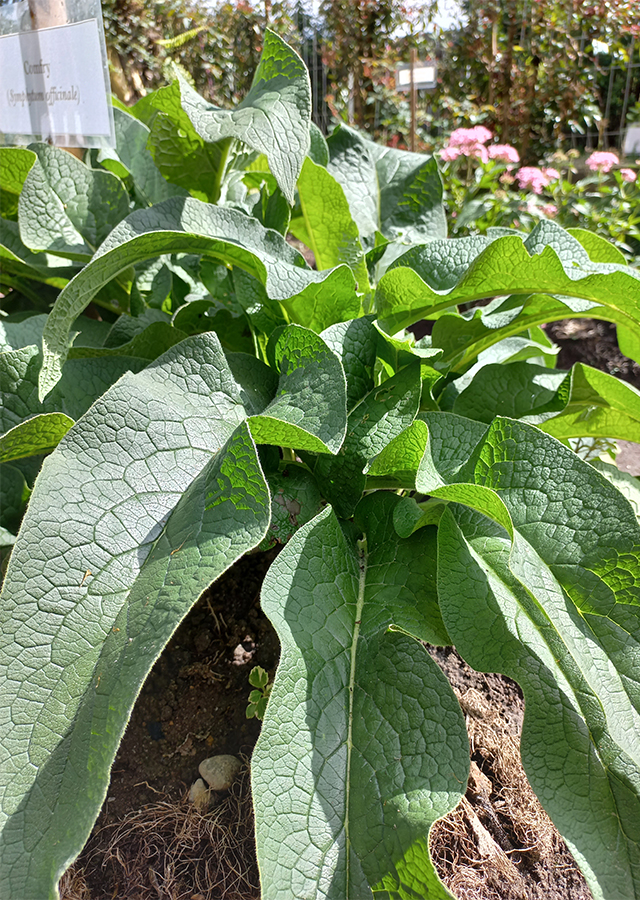Traditional Herbs from Symphytum officinale
constipation
- Prepare enough kompri leaves, wash them until clean.
- Boil the ingredients until boiling.
- Strain the boiled product.
- Drink while it's warm.
inflammation_swelling
- Prepare kompri leaves, wash until clean.
- Crush the leaves until they become a paste.
- Apply the leaf paste on the swollen part of the skin.
What is Symphytum officinale Looks like??



Parts of Symphytum officinale that could be used
- Leaves
- Roots
Symphytum officinale Distribution
Kompri is a plant that forms clumps and originates from Europe. It has long been naturalized in North America and cultivated in several Mediterranean countries (Turkey, Egypt), East Asia (Japan), Southeast Asia (Indonesia, Philippines), Africa. In Africa, this plant is cultivated only on a small scale, especially in Madagascar and South Africa. This species has a long history of use as a traditional medicine. An ancient herb of this species has been known since 400 BC and was used by the Greeks to treat bronchial problems and repair broken bones. In Ayurveda, it is used to treat stomach ulcers. In its native distribution area, all parts of this species are used medicinally and are included in several European and Polish pharmacopeias. However, currently, the use of Symphytum officinale as an internal herbal medicine has been prohibited by law in many countries in Europe. This is because the pyrrolizidine alkaloid content in this species is a toxic compound and has been proven to be hepatotoxic, pneumotoxic, carcinogenic and mutagenic. However, external application to treat bruises, strains, and sprains is considered safe because the absorption of pyrrolizidine alkaloids through the skin is negligible. Kompri also contains allantoin which has healing, calming and anti-irritant properties. In the pharmaceutical industry, substances in this species are widely used in anti-acne and sun care products. Apart from that, this species is also often planted by people as an ornamental plant.Agroecology of Symphytum officinale
Kompri can be found living in damp grasslands, riverbanks, and roadsides. This plant is able to adapt to most soils, but with damp and wet soil conditions, and grows well in heavy clay soil. Kompri plants are suitable in positions in the open, or in partial shade.
Morphology of Symphytum officinale
- Taproot and brown.
- Rhizome thick, black outside and white inside.
- False stem, not woody, winged, hollow, often branched, fleshy lower stem.
- Single leaf, midrib grows alternately at the base to form a rosette of roots, lanceolate to ovate-lanceolate, dark green and hairy, blades ovate-lanceolate to ovate, elongated to the base to form leaf stalks and stems, forming wings, pointed apex, edge flat, pinnate spines, rough hairy surface.
- Compound flowers, borne on short curved racemes. Have lanceolate 5-lobed petals and a cylindrical tubular corolla, 12 - 18 mm long, small-lobed, purple, dirty pink or white, with scales on the throat. The stamens are five in number and are in the middle of the corolla tube, the filaments are short.
- Fruit is round, consists of 4 seeds, shiny dark brown or black, covered by petals.
- Seeds are round, small, hard, black.
Cultivation of Symphytum officinale
- Propagation is carried out generatively using seeds, or vegetatively by separating the roots and in vitro propagation from root explants.
- The optimal planting distance is 70 cm \u00d7 70 cm.
Symphytum officinale, more details :
Chemical Content of Symphytum officinaleAllantoin, phenolic acids (rosmarinic, chlorogenic, caffeic and lithospermic acids), p-hydroxybenzoic, p-coumaric acid, silicic acid, pyrrolizidine alkaloids (heliosupine, echimidine, echinatin, lasiocarpine, heliosuipine, lycopsamine, 7-acetyllycopsamine and 7-acetylintermedine , symphytine, cynoglossine, symlandine, intermedine), tannins, terpenoids, sterols/triterpenoids, flavonoids, amino acids, flavones, saponins, choline, asparagine, essential oils.
Benefits of Symphytum officinale
Treating asthma, colds, coughs with phlegm especially for children, ulcers, constipation, hypertension, sprains and broken bones, inflammation, swelling, insect bites, stomach ulcers, various skin diseases (scabs, athlete's foot, boils, acne, irritation), healing cuts and burns, bruises, excessive menstrual flow, vaginal discharge, breast cancer, mouthwash for gum problems, pharyngitis, pneumonia and angina, gum disease, sleeping pills, psoriasis, joint pain, rheumatism, arthritis, gout, and has anti-inflammatory and hemostatic properties (stops bleeding).
Simplisia of Symphytum officinale
- Prepare kompri leaves, wash thoroughly with running water then drain.
- Dry in the sun or in an oven at a temperature\u00a040\u00b0C until the water content\u00a010%.
- Grind using a blender until it becomes powder. Sieve with a sieve 60 mesh.
- Store in a clean and airtight place.
Another Facts for Symphytum officinale :
Synonym of Symphytum officinale-
Habitus of Symphytum officinale
Herb. Annual herb, forms clumps, up to 120 cm high
Habitat of Symphytum officinale
- Riverside
- Grassland
No comments:
Post a Comment